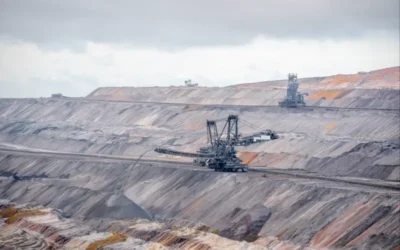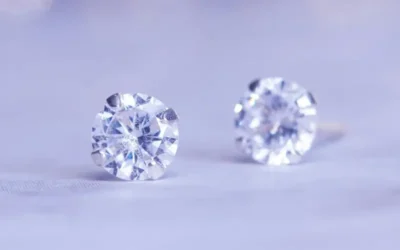Lab-Grown vs. Mined Diamonds: Which Shines Brighter for the Planet?
Diamonds have long symbolized enduring love and unparalleled luxury, but increasingly, eco-conscious shoppers are looking beyond sparkle and carat size. Today’s diamond buyers are asking: “What is my diamond’s impact on the planet?” As awareness of climate change and environmental stewardship grows, the carbon footprint of every product—jewelry included—becomes part of the purchase decision.
In this article, we’ll dive into the sparkling debate over diamonds and sustainability, comparing the greenhouse-gas emissions, resource demands, and ethical considerations of lab-grown vs. mined diamonds. By the end, you’ll feel empowered to choose the diamond that not only captures light but also reflects your commitment to a healthier planet.
Whether you’re hunting for an engagement ring, stocking your boutique, or simply curious about diamond sustainability, understanding the emissions behind each carat is crucial. We’ll start by defining what a carbon footprint entails in the world of diamonds, then examine the environmental cost of traditional mining—from massive land disturbance to global shipping. Next, we’ll spotlight the cutting-edge realm of lab-grown stones, exploring how choices in energy and technology shape their footprint.
Finally, we’ll place lab-grown and mined diamonds side by side in a head-to-head comparison, then broaden the lens to include water use, human rights, and emerging innovations like carbon capture reactors. Along the way, you’ll find practical tips for selecting responsibly sourced stones and a glimpse into the future trends poised to reshape this glittering industry. Let’s embark on this journey toward beauty without compromise, and discover which kind of diamond truly shines brighter for our planet.
Understanding Carbon Footprints: Why It Matters for Diamonds
 A carbon footprint measures the total greenhouse-gas emissions—primarily carbon dioxide—released across a product’s entire lifecycle, from raw material extraction through production, transportation, and eventual disposal or recycling. For diamonds, which can originate in deep-earth mines or high-tech labs, the stages differ markedly, but each involves energy inputs, material handling, and logistics that leave an environmental trace.
A carbon footprint measures the total greenhouse-gas emissions—primarily carbon dioxide—released across a product’s entire lifecycle, from raw material extraction through production, transportation, and eventual disposal or recycling. For diamonds, which can originate in deep-earth mines or high-tech labs, the stages differ markedly, but each involves energy inputs, material handling, and logistics that leave an environmental trace.
In the case of mined diamonds, emissions begin with earth-moving equipment powered by diesel fuel, continue through ore processing plants that crush and separate rock, and extend across thousands of miles of shipping routes as rough stones travel to cutting centers and finally reach jewelry stores. Every liter of fuel burned and kilowatt-hour consumed emits CO₂, methane, or nitrous oxide, collectively warming the atmosphere.
Lab-grown diamonds sidestep heavy excavation but rely on electricity to power reactors that transform carbon into crystalline gems. Whether using High-Pressure High-Temperature (HPHT) or Chemical Vapor Deposition (CVD) methods, these facilities require consistent, intense energy, often sourced from local power grids with varying mixes of coal, gas, hydro, solar, or wind. The more renewables on that grid, the lower the lab-grown diamond’s carbon footprint.
Understanding these emissions is not just an academic exercise. As climate risks mount—extreme weather events, sea-level rise, and biodiversity loss—consumers and businesses alike bear responsibility for curbing CO₂ output. By comparing the carbon footprint of diamonds side by side, shoppers can make informed choices that align luxury with environmental stewardship and brands can communicate transparent, meaningful sustainability claims.
The Environmental Cost of Mined Diamonds
Land Disruption and Ecosystem Damage
Diamond mining often takes place in ecologically sensitive regions, from the arid scrublands of Australia to the lush forests of Botswana and Canada’s boreal zones. Open-pit mining, the most common method for alluvial or kimberlite deposits near the surface, involves stripping away vegetation and topsoil across square kilometers. The process not only destroys habitats and fragments wildlife corridors but also accelerates soil erosion. In arid and semi-arid regions, the removal of vegetation can lead to permanent losses in soil carbon storage, exacerbating regional desertification and reducing the land’s natural capacity to sequester CO₂.
Energy and Water Consumption
Beneath the surface, underground mines carve deep shafts and tunnels, requiring powerful pumps to manage groundwater intrusion and massive ventilation systems to circulate breathable air. Both open-pit and subterranean operations rely on fleets of haul trucks, excavators, and crushers that run on diesel fuel, releasing carbon monoxide, nitrogen oxides, and particulate matter. Processing ore in concentration plants demands vast volumes of water for screening, flotation, and gravity separation. While modern mines recycle much of this water, evaporation losses remain high, drawing precious freshwater from nearby rivers, aquifers, or reservoirs—resources already stretched thin in many mining communities.
Transportation and Processing
Once extracted, rough diamonds embark on a complex global voyage. They travel by truck, rail, or ship to sorting centers, then by air freight to cutting and polishing hubs in countries like India, Belgium, and Israel. Each leg of shipment adds emissions: aviation is especially carbon-intensive, and cold-chain or security requirements can further increase fuel use. After transforming into polished gems, diamonds may re-export to jewelry manufacturers and retailers around the world, chaining on more CO₂ with every border crossed. When added together, these logistics can rival the emissions from the extraction phase itself.
Across its lifespan—from earth removal to the store display—a single carat of mined diamond can generate between 150 to 400 kilograms of CO₂ equivalent, depending on ore grade, distance traveled, and country-specific energy mixes. These figures demonstrate that traditional diamond mining’s environmental cost extends far beyond the glimmering elegance these gems embody.
Lab-Grown Diamonds: A Greener Alternative?
Production Methods: HPHT vs. CVD
Lab-grown diamonds leverage high-precision science rather than earth-moving machinery. In High-Pressure High-Temperature (HPHT) systems, carbon sources are subjected to pressures exceeding 5 gigapascals and temperatures above 1,300°C, emulating the natural diamond-forming environment deep within the mantle. Chemical Vapor Deposition (CVD), by contrast, uses microwave or plasma reactors to break down a hydrocarbon gas, causing carbon atoms to deposit layer by layer onto a diamond seed. CVD generally operates at lower pressures and temperatures than HPHT, leading to incremental efficiency gains, although each method continues to evolve with reactor design improvements and automation.
Energy Sources and Efficiency
While labs avoid diesel generators and earth excavation, they draw significant electricity—sometimes over 2,000 kWh per carat in older setups. Yet the pivotal factor is energy source. A lab powered by a grid dominated by coal will produce far more CO₂ than one tapping hydroelectric or solar farms. Forward-looking producers like Diamond Foundry and Pure Grown use renewable power purchase agreements or on-site solar arrays, cutting their per-carat emissions by more than half. Some facilities even incorporate battery storage to smooth demand spikes and further reduce reliance on fossil-fuel peaker plants.
Waste and Resource Management
Lab growth generates minimal solid waste compared to the millions of tons of tailings from a mine. The byproducts—spent reactor liners, metal foils, and recycled catalysts—are typically non-toxic and amenable to metal recovery processes. Water used for cooling and cleaning reactor vessels is often circulated in closed-loop systems, recycling up to 90% of process water. This contrasts sharply with open-pit operations, where tailings dams pose long-term risks of contamination and catastrophic dam failures. For lab-grown diamonds, responsible waste management is integral to a smaller environmental footprint.
Head-to-Head: Carbon Emissions Comparison
When lined up side by side, the emissions profiles of mined versus lab-grown diamonds reveal clear trends. A typical mined diamond incurs around 200–300 kilograms of CO₂ equivalent per carat, factoring in mining, processing, and transportation. In contrast, lab-grown diamonds produced with a conventional grid mix average 50–150 kilograms per carat. When manufactured on a renewable-heavy grid, labs have achieved footprints as low as 10–20 kilograms of CO₂ per carat, an order of magnitude below many mined operations.
Three key factors drive these disparities. First, heavy-duty machinery and long-distance shipping dominate the mined-diamond lifecycle; lab production confines most emissions to electricity use within a single facility. Second, grid carbon intensity varies widely: labs in hydro-rich regions like Quebec or Norway have inherently lower footprints than mines in coal-reliant areas. Finally, scalability and technological innovation play a role; as lab producers invest in more efficient reactors and green energy contracts, their per-carat emissions continue to decline.
As the clean-energy transition accelerates and reactor designs improve, lab-grown stones are poised to maintain their environmental edge, provided the industry remains committed to renewable sourcing and efficiency gains.
Beyond Carbon: Other Environmental and Ethical Considerations
While carbon emissions dominate the conversation, other impacts factor into a holistic view of diamond sustainability. Water use, for instance, can dwarf carbon concerns: mined diamonds may consume over 100 gallons of water per carat in processing and dust suppression, whereas lab-grown facilities use closer to 15–20 gallons, often recycled in-house. Biodiversity loss from mining’s land disturbance can persist for decades, even after reclamation efforts conclude.
Ethical dimensions also diverge. Mined diamonds have a fraught history of “conflict stones,” prompting global initiatives like the Kimberley Process to certify conflict-free origins. Yet loopholes and enforcement gaps still allow abuses. Lab-grown diamonds, created in secure industrial settings, bypass many of these human-rights risks, though they too require rigorous labor standards to ensure worker safety and fair wages.
Finally, circular economy practices—such as repurposing estate jewelry and reselling pre-owned stones—offer zero-emission alternatives that neither mining nor lab growth can claim. Together, these factors remind us that sustainable diamond sourcing is about more than carbon; it’s an interplay of water stewardship, land ethics, human rights, and innovative business models that close the loop.
Consumer Guide: How to Choose a Sustainable Diamond
Selecting a responsible diamond requires asking the right questions and looking for credible assurances. First, inquire whether a lab-grown diamond is powered by renewables—ask for details on the producer’s energy contracts or on-site generation. For mined stones, ask about land rehabilitation plans and water-recycling practices at the source mine. Seek certifications such as Climate Neutral Certified or SCS Global Services, which validate carbon footprint claims, and look to Fairtrade or Fairmined gold programs that often extend ethical standards to diamond sourcing.
Beyond certifications, transparency matters. Brands that publish detailed lifecycle data, share third-party audit reports, and tell the full story of their supply chain demonstrate accountability. Finally, consider pre-owned or vintage diamonds, which carry virtually no new emissions. By combining these strategies—asking questions, checking credentials, and exploring circular options—you’ll align your purchase with both your aesthetic ideals and your environmental values.
The Future of Diamonds: Innovation and Trends
 The horizon for diamond sustainability sparkles with innovation. Carbon capture pilots aim to integrate captured CO₂ into CVD reactors, potentially enabling diamonds that are net-zero or even carbon-negative. Advances in reactor technology—such as microwave-driven CVD systems—promise to shrink energy requirements by another 30% or more. On the mining side, companies are experimenting with enhanced rock weathering, using crushed silicate minerals to lock away CO₂ in soils, and deploying hybrid electric haul trucks to cut diesel consumption.
The horizon for diamond sustainability sparkles with innovation. Carbon capture pilots aim to integrate captured CO₂ into CVD reactors, potentially enabling diamonds that are net-zero or even carbon-negative. Advances in reactor technology—such as microwave-driven CVD systems—promise to shrink energy requirements by another 30% or more. On the mining side, companies are experimenting with enhanced rock weathering, using crushed silicate minerals to lock away CO₂ in soils, and deploying hybrid electric haul trucks to cut diesel consumption.
Policy incentives will also shape the sector. Governments may soon require product carbon labeling, pushing retailers to differentiate with low-footprint offerings. Consumer demand surveys already show a strong willingness to pay premiums for sustainable jewelry, signaling market support for brands that invest in green practices. As renewable energy costs decline and circular economy models mature, the diamond industry stands at a crossroads—one path leading to deeper environmental accountability, the other risking obsolescence in a carbon-constrained world.
Conclusion: The Clear Choice for a Sustainable Sparkle
After weighing lab-grown vs. mined diamonds, one truth shines through: lab-grown diamonds generally carry a significantly lower carbon footprint, especially when powered by renewable energy. They avoid the land disturbance, water depletion, and complex shipping networks that inflate the emissions of traditional mining. Yet mined diamonds maintain cultural resonance and are making strides in emissions reduction and ethical sourcing. Ultimately, the best choice depends on your priorities: minimized carbon impact, support for local mining communities, or a blend of both.
For consumers, the path is clear. Seek transparency, favor renewables, and consider circular options like pre-owned stones. For brands, the imperative is to measure, disclose, and continually improve sustainability metrics, from reactor efficiency to mine rehabilitation. By embracing data-driven decision-making and innovative technologies, the diamond industry can evolve toward a future where beauty doesn’t cost the Earth. Together, we can ensure that every diamond sparkles with a truly sustainable sparkle.






